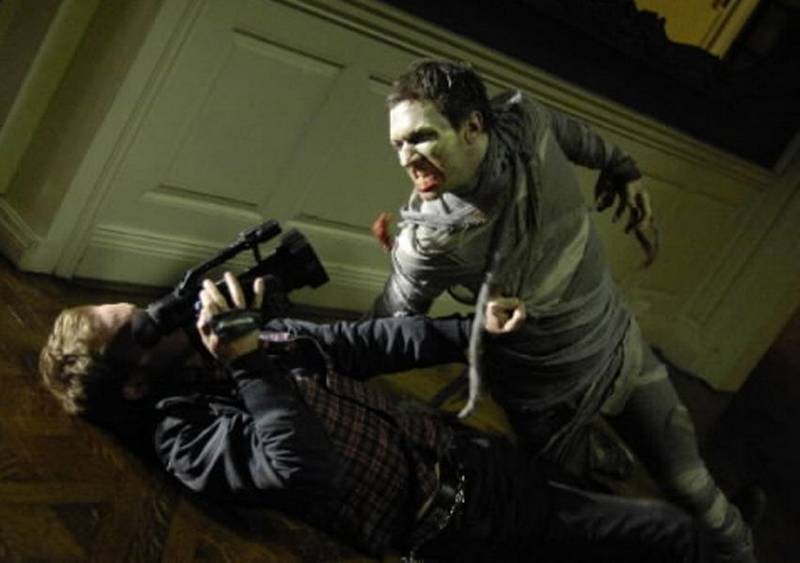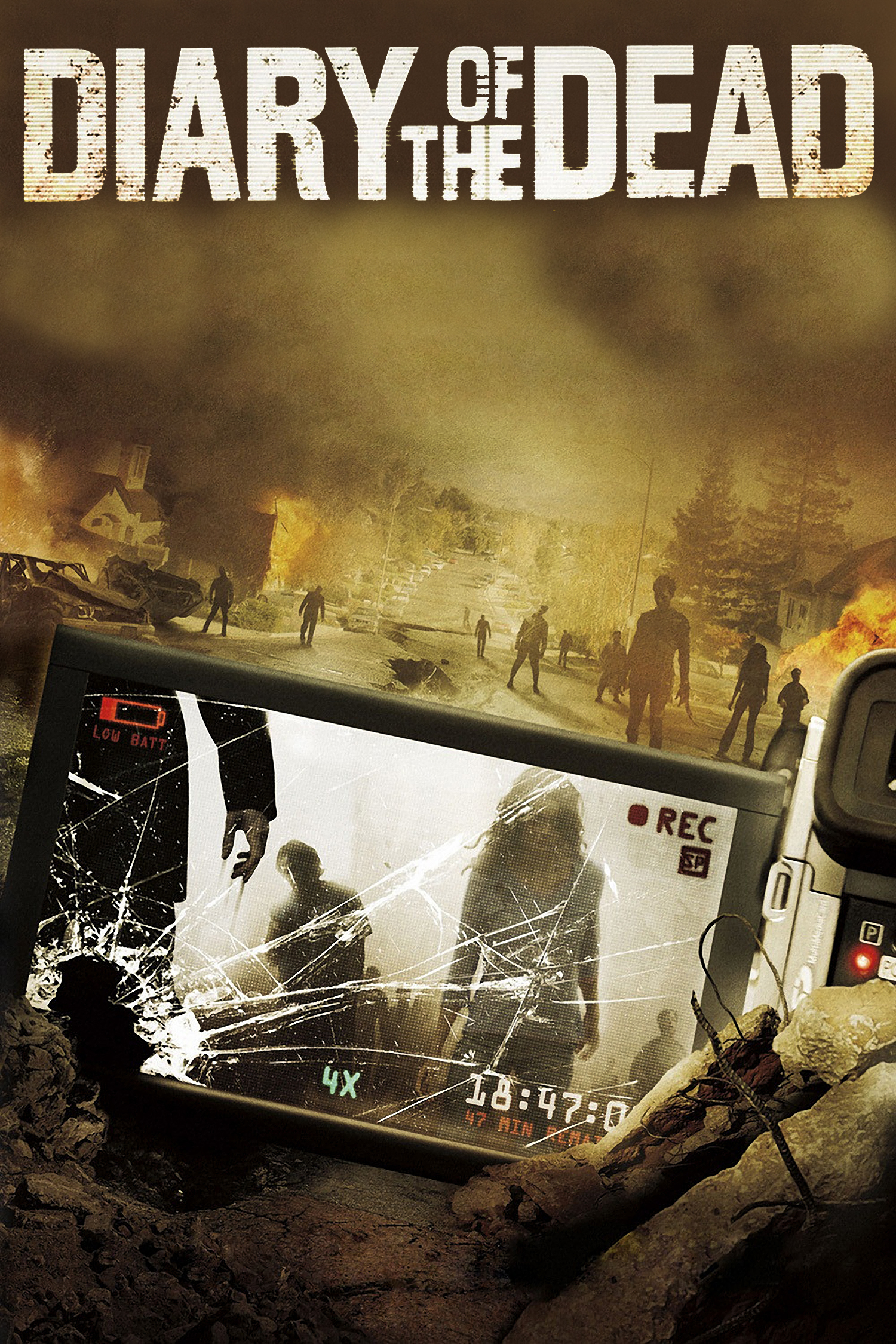When young filmmakers gather to shoot cinema-verite video documentaries, watch out: Something really bad is going to happen. In “The Blair Witch Project,” it was … well, we don’t really know what it was, but it sure freaked out Heather.
In “Cloverfield,” it was something large with an antipathy toward Manhattan landmarks. And in George A. Romero’s “Diary of the Dead,” as you have probably gathered by now, it is the meat-eating undead. These movies give the shaky-cam a reason to get shaky — but the kids try not to miss a shot.
“Diary” is ostensibly edited by Debra (Michelle Morgan) from hand-held footage shot on the run by her film-student boyfriend Jason (Joshua Close) and some of their friends, who’ve been collaborating on Jason’s horror-movie student project, overseen by their alcoholic film professor Maxwell (Scott Wentworth), who’s just about the only person over 30 in the entire film, except for an old Amish guy who swings a mean scythe.
Writer-director Romero may be 68, but “Diary” is targeted at the Young of Intestines, a generation for whom zombie movies and Web video are facts of everyday life, as natural as eating flesh.
This is the fifth of Romero’s “Living Dead” series, which started 40 years ago with the revolutionary “Night of the Living Dead” (the grainy, black-and-white, trapped-in-the-house one — and still the scariest), “Dawn of the Dead” (the shopping mall one, 1978), “Day of the Dead” (the military bunker one, 1985), “Land of the Dead” (the walled-city one, 2005), and now “Diary of the Dead,” which might be called the Web one. (Romero has another sequel scheduled for 2009.)
The last “Dead” movie had stars like Dennis Hopper, Asia Argento, John Leguizamo and Simon Baker. Now Romero returns to his DIY roots, though there’s a lot of star-power off-camera, with newsreader voice cameos by the likes of Wes Craven, Stephen King, Simon Pegg (“Shaun of the Dead”), Quentin Tarantino and Guillermo del Toro.
In “Night of the Living Dead,” Romero used radio and television news broadcasts to envelop an isolated Pennsylvania farmhouse in an atmosphere of invisible but impending menace, the unseen specter of a larger world gone undead.
Now those technologies have been all but supplanted by “pro-sumer” videocams, security surveillance monitors and laptops with broadband Web connections. Nobody believes the government spin spread by conventional mass media anymore.
Bloodthirsty corpses have run amok in the streets, and the Homeland Security Alert system has been temporarily raised to orange. It’s up to citizen-journalist bloggers and amateur videographers to capture and disseminate the raw, unfiltered story of what’s really going on, to show you the horrific truth they won’t put on TV.
Does this scenario remind you of anything? “Diary” presents a world of post-9/11, post-Iraq-invasion paranoia and distrust of the “official story.” (We used to call this a “post-Watergate” skepticism, but we’re post- that now.) The zombies you can see. You can run them over in your Winnebago or take them down with a shot to the head. But the larger monster is uncertainty: What is happening? Why? And where will it strike next?
“I think that’s what started the panic — not knowing the truth,” one character says. This is what really puts the “terror” in “terrorism,” not the flesh-ripping shenanigans of the suicide-zombies right there in front of you — although they do tend to surprise you by lunging from just beyond the edge of the frame.
When Debra takes a moment to reflect on a future of endless war, in which every person who is killed returns from the dead to kill someone else … she’s talking about the cycles of vengeance and violence in places like Iraq and Afghanistan — blowback, not just biteback.
At the beginning of the movie, Debra tells us that she’s assembled the feature we’re about to see — “The Death of Death,” a doc in the vein of Internet 9/11 conspiracy exposes like “Loose Change” — and has added music in some scenes because she wants to scare us into waking up to the truth: “I am trying to scare you.”
Well, with just two videocams and a dwindling number of operators, they never quite get the truth, just some juicy fragments here and there. And “Diary of the Dead” isn’t really all that scary. Even a mansion swarming with the undead is no match for the theatrical competition of, say, Daniel Plainview or Anton Chigurh.
But while horror provides the marketing hook, Romero’s movies are even more entertaining for their zesty sociopolitical satire, and like its ancestors, “Diary” explodes like an undead noggin with that stuff. A favorite touch: someone on a talk radio show is overheard remarking that the real “immigration problem” is now about people crossing the border between life and death.
“There’s always a market for horror — believable horror,” director Jason expounds during a nighttime location shoot for his mummy movie. You may not believe in zombies, but the unnamed dread in the air of “Diary of the Dead” is recognizably believable, because we live with it now.




















